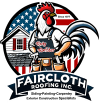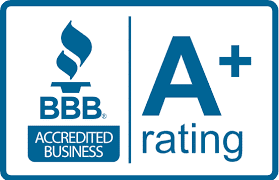How Often Should You Get a Roofing Inspection?
Regular roofing inspection helps identify potential issues before they turn into costly repairs, ensuring the roof remains durable and efficient. Climate, roof age, and material type influence how often inspections should be scheduled. Homeowners and businesses benefit from routine assessments, especially after harsh weather conditions or before significant property transactions. Understanding inspection timelines and best practices can extend a roof’s lifespan, enhance energy efficiency, and maintain insurance compliance. Why Roofing Inspection Is Necessary? Regular roofing inspection prevents minor damage from escalating into expensive repairs, ensuring the structure remains sturdy and efficient. Homeowners and businesses benefit from scheduled evaluations that address wear and tear, storm damage, and aging materials. A well-maintained roof enhances property value, improves energy efficiency, and complies with insurance and warranty requirements. Detects Damage Before it Worsens Small cracks, loose shingles, or hidden leaks weaken the roof’s integrity over time. Early detection allows for quick fixes, preventing water infiltration and structural deterioration. Addressing minor issues immediately reduces the risk of costly repairs or premature roof replacement. Extends Roof Lifespan Routine inspections help maintain roofing materials and prevent premature aging. Identifying weak spots and reinforcing them improves durability against weather and environmental factors. A properly maintained roof lasts longer, delaying the need for a full replacement. Protects Interior from Water Damage Leaks often start small but quickly spread, damaging ceilings, walls, and insulation. Moisture buildup promotes mold growth, leading to health risks and costly remediation. Regular inspections ensure the roof remains watertight, protecting the property’s interior. Maintains Energy Efficiency Gaps, cracks, and poor insulation cause temperature fluctuations and higher energy costs. Inspecting the roof ensures proper sealing, reducing heat loss in winter and excess heat absorption in summer. A well-maintained roof helps stabilize indoor temperatures, improving overall energy efficiency. Ensures Insurance and Warranty Compliance Insurance policies and warranties often require proof of regular maintenance. Neglecting inspections may lead to denied claims when damage occurs. Keeping up with scheduled evaluations helps property owners meet coverage requirements and avoid unexpected expenses. Factors for Determining Roofing Inspection Frequency Several factors influence how often a roofing inspection should be scheduled to maintain durability and prevent costly damage. Climate conditions, roof age, material type, past maintenance, and insurance requirements all play a role in determining the ideal inspection timeline. Adjusting the inspection schedule based on these factors ensures long-term protection and efficiency: Weather and Environmental Conditions Extreme weather events, such as heavy rain, snow, hail, and high winds, accelerate roof deterioration. Roofs in areas with frequent storms require more inspections to detect hidden damage. UV exposure in hot climates causes materials to expand, crack, or lose protective coatings. Coastal properties face additional risks from saltwater corrosion and humidity-related wear. Regular inspections help counteract environmental damage and maintain structural integrity. Roof Age and Material Durability Older roofs require more frequent evaluations due to natural wear and weakening materials. Asphalt shingles, metal, tile, and flat roofs age differently, affecting how often they need assessments. Signs of aging, such as curling shingles, rusted metal, or cracked tiles, indicate potential vulnerabilities. Newer roofs may require fewer inspections but still need monitoring for early signs of wear. Scheduling inspections based on roof age prevents unexpected failures and costly repairs. Previous Repairs and Maintenance History A roof with a history of leaks, patchwork repairs, or structural reinforcements may need more frequent assessments. If not regularly checked, repaired areas can weaken over time, leading to recurring issues. Inspecting previously fixed sections helps ensure long-term effectiveness and prevents further deterioration. Skipping routine evaluations increases the likelihood of undetected damage spreading. Consistent maintenance keeps past repairs intact and extends the roof’s lifespan. Warranty and Insurance Requirements Many roofing warranties and insurance policies require proof of regular inspections. Failing to meet these conditions may lead to denied claims when damage occurs. Insurers often mandate professional evaluations after storms or as part of routine maintenance. Property owners who follow inspection guidelines avoid unexpected financial burdens. Keeping up with scheduled assessments ensures compliance and maximizes coverage benefits. Nearby Trees and Debris Accumulation Overhanging branches and falling debris increase the risk of roof damage. Leaves and twigs clog gutters, causing water to pool and weaken roofing materials. Branches rubbing against shingles or tiles lead to gradual wear and surface damage. Regular roofing inspections help identify and remove debris before it causes serious structural issues. Trimming trees and clearing buildup reduce the frequency of emergency repairs. Roof Usage and Foot Traffic Due to frequent foot traffic, commercial properties and buildings with rooftop equipment experience more wear. HVAC units, solar panels, and maintenance crews contribute to material stress and potential punctures. Increased movement on the roof requires more inspections to ensure seals and fasteners remain intact. Foot traffic accelerates the breakdown of protective coatings and waterproof membranes. Scheduling routine evaluations prevents damage from overlooked structural weaknesses. Roofing Inspection Guidelines for Different Roof Types Roofing materials require specific inspection methods to ensure long-term durability and structural integrity. Factors like material composition, weather exposure, and aging patterns influence how inspections should be conducted. Regular evaluations help detect early signs of damage, allowing timely repairs and maintenance. Following the proper inspection guidelines improves performance and extends the lifespan of each roof type: Asphalt Shingle Roof Inspection Shingles should be checked for curling, cracking, or missing pieces that can lead to leaks. Granule loss on shingles indicates aging and reduced weather resistance. Flashing around chimneys, vents, and skylights must be inspected for gaps or deterioration. Regular assessments prevent water damage and prolong the roof’s efficiency. Metal Roof Inspection Panels should be checked for rust, corrosion, or loose fasteners that affect structural stability. Seams and joints must be evaluated to ensure proper sealing against moisture infiltration. Expansion and contraction from temperature changes can cause panels to shift, requiring realignment. Routine inspections help maintain energy efficiency and prevent premature wear. Tile Roof Inspection Cracked, broken, or displaced tiles can create entry points for water and pests. The underlayment should be examined for signs of deterioration or moisture retention. Moss and algae buildup on tiles










